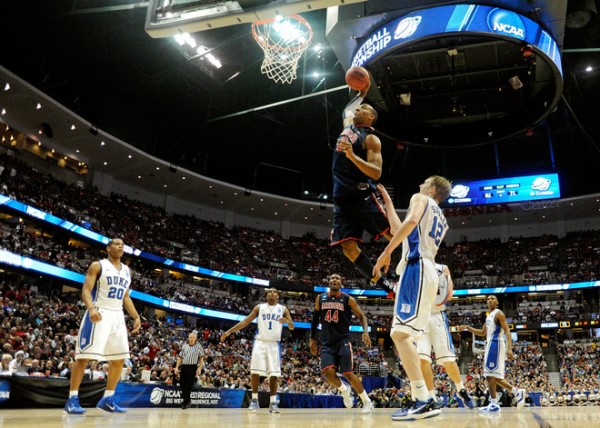One-and-Done Rule: Status Quo With Several (Not Good) Options…
Posted by rtmsf on December 1st, 2011An interesting thing happened last weekend. The NBA lockout came to a close and the single most impactful aspect of the labor negotiations on the sport of college basketball was left on (or under) the table without a decision yet made. It had been widely speculated for months, even years, that NBA ownership was heavily in favor of changing its draft eligibility rule from the current much-maligned one-and-done format — where players are eligible for the NBA Draft one year after their high school class graduates and when they turn 19 years old – to the more brand-friendly two-and-through/20 years old format. The general idea behind this proposal is to protect owners from themselves in drafting unproven prospects with the dreaded ‘upside’ moniker attached, as well as to allow players to develop from both a maturity and basketball standpoint. And don’t discount the ever-important marketing perspective — it’s far easier for a team to promote a Derrick Williams after he destroys Duke in the NCAA Tournament than a Monta Ellis who nobody has ever seen play before.
This issue, along with several other “B-list” considerations such as drug screening and D-League assignments, will have to be sorted out prior to finalization of the collective bargaining agreement between players and owners tentatively scheduled for next Friday, but perhaps the most intriguing development is that, according to this Yahoo! Sports report, the league may in fact simply come to terms with the players in formulating a committee to study the matter further. Say what?
The shelving of the age minimum debate buys the league more time to deal with the high-profile and impactful issue.
How much more time does the NBA need? Not only has one-and-done been in effect since the 2006 NBA Draft (over five years ago), but couldn’t someone have put a few hours toward researching this topic during the 149-day lockout period? The league and players know what the issues are here, and they’ve known for a considerable amount of time. Yet, what’s perhaps even more perplexing is that one of the apparent motivators for studying the options available is to look at the tried-and-true MLB model where players can enter the draft after high school, but if they choose to enter college, they must stay for two or three years.










































